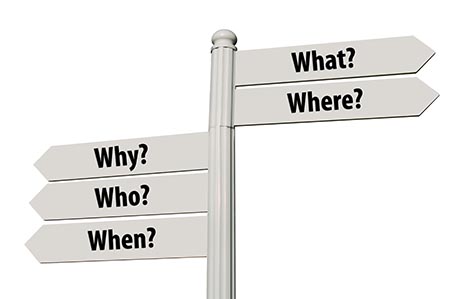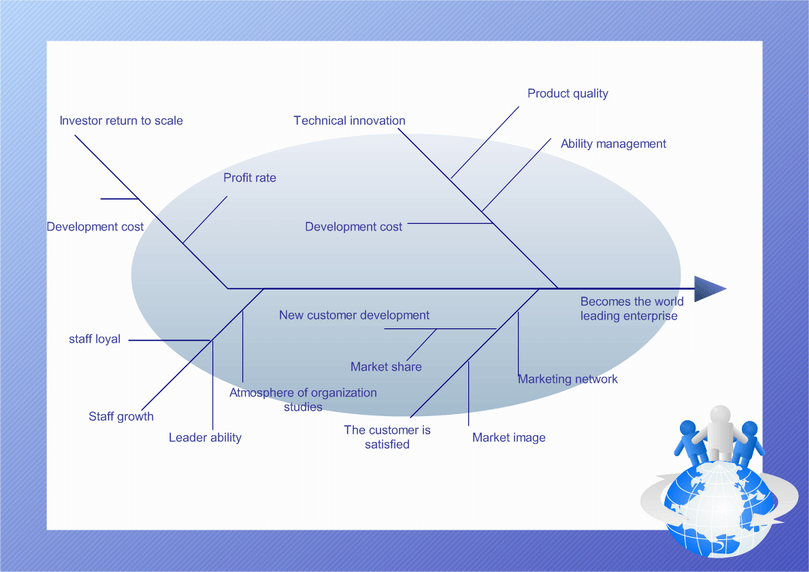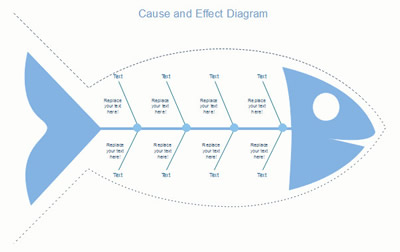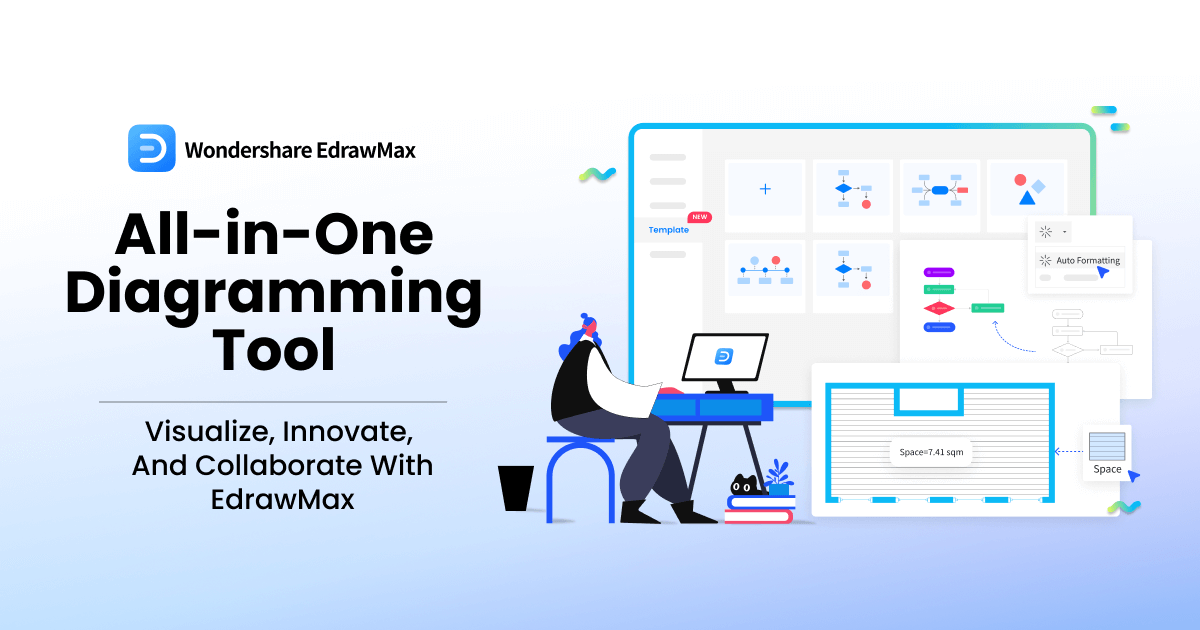5W1H Method
Edraw Content Team
Want to create a fishbone diagram? Design Now!
EdrawMax Fishbone Diagram Maker helps to create specialized fishbone diagram with ease. You can edit the built-in template and design it in your own style. Just give it a shot.
The 5W1H method is a term coined after the poem by Rudyard Kipling that written in his writing called Just So Stories, published in 1902:
"I keep six honest serving-men
(They taught me all I knew);
Their names are what and why and when
And how and where and who"
Later on, this poem became the basis on which the method was named. It became an approach towards problem-solving, where each Ws and H help one to address an issue from different angles and be able to come up with possible solutions.

What is the 5W1H Method?
The 5W1H method can be defined as one where one can address all the Ws and H and gain an understanding of a problem. For instance, if one's car is giving inadequate gas mileage the following questions can be asked:
- Who has recognized the problem or who drives the car?
- What has changed - for instance, maintenance and repairs done last, change in the gas station?
- When did the mileage start to deteriorate?
- Where are the new driving routes or distances that the car is covering?
- How the problem became noticeable? How can it be addressed?
The questions can be changed to make it pertinent to whatever problem or issue is being addressed. The essential Ws and H help to cover all aspects of a problem so that a comprehensive solution can be found.

Image Source: https://www.velaction.com/
If you wonder how to create 5W1H or Fishbone Diagram in a minute? Try EdrawMax to use pre-made templates and edit by yourself!
When to Use the 5W1H Method?
There are different applications of the 5W1H method in the corporate or manufacturing world. It forms the basis for analyzing skills as well as techniques for cause and effect analyses in different problems. The 6M method, referring to manpower, materials, machinery, measurement, methods, manpower and Mother Nature are some of the main categories where this method comes of use.
Brainstorming sessions also make use of this method. The simplicity, versatility and comprehensive approach of the method makes it easy to structure a brainstorming or analysis process.

Image Source: Pixabay
The way the method is used is with the following steps:
First W is What?
It asks the question as to what needs to be improved. What would be the improvement help to achieve and what should be done.
Second W is Where?
It refers to questions regarding location. Should a worker's method or orientation be changed? For instance, why operate in a certain location, its advantages or limitations.
Third W is When?
It addresses issues regarding the sequence of operation, its period and time. Why it should be performed and at what time. Would changing the timeline make execution better?
Fourth W is Who?
It refers to who needs to address the issue or be responsible for implementing the solution. It refers to task assignment, collaboration, and manpower.
Fifth Aspect is How?
It refers to how a procedure or method should be changed, whether a method requires less expense or proficiency; whether its procedure needs to be replaced with a better one.
Last W is Why?
Here one can ponder over everything; from the problem being perceived to the approaches having been discussed on how to solve it and improve upon the same.
When it comes to cause and effect analysis as an application of the method, it is done by drawing out a fishbone diagram. There are software applications like Edraw that automates the process. With an easy user-friendly interface, a user can use the readymade templates, clipart, and other shapes to draw out fishbone diagrams to address a problem.
You May Also Wonder: Cause & Effect Analysis - 6M
Advantages of the 5W1H Method
Advantages of the 5W1H method are several:
- The process is simple; people can understand the approach as is apparent from the term and its definition.
- It helps to take a problem-solving approach systematic; one can ask all questions every time to gain success in looking at a problem from all angles.
- Versatile is another advantage of this approach; it can be used to address any kind of problem as the questions can be tailored according to each situation.
- Comprehensive cover or view of a problem helps one to address all key aspects; once a 360-degree view of a problem is taken one can then decide on the resolution route.
Here to get a comprehensive fishbone maker to create either 5W1H or other fishbone diagram with ease!
EdrawMax
Efficient Fishbone Diagram Maker >>
- Superior file compatibility: Import and export drawings to various file formats, such as Visio
- Cross-platform supported (Windows, Mac, Linux, Web)
How to Apply 5W1H Method to Your Work?
You can follow the steps below and add pictures when you think it's necessary. Describe the initial situation and identify your problem, use 5w1h templates from EdrawMax to start analyzing the case (write the detailed 6 parts - what/who/when/where/why/how.)

There are different ways that one can apply the 5W1H method to work. Being a universal approach that can be applied to any situation, it acts as an analytical tool for project teams and managers who can use it effectively with others to brainstorm and clear out a path for achieving a certain team, departmental or organizational objective.
Setting an organizational pathway is often a complex task in different situations. In order to set clear paths to achieving certain objectives senior management of an enterprise can use this approach with the following steps:
- It is best to start by breaking down complex problems with a cause and effect diagram or a fishbone diagram; this helps to cut down a complex objective into several small parts; these can then be solved one after another; it also helps to address the different Ws and H and reach the main objective.
- A fishbone diagram can start to facilitate an initial brainstorming session. It helps to identify the different Ws and showcase how organizational growth can be achieved which is the main H here.
Determine the key factors and prioritize them, propose fitting and, importantly, effective, actions. Let's create a fishbone diagram by using 5w1h method.
If you wonder how to create 5W1H diagram in a minute? Try EdrawMax to use pre-made templates and edit by yourself!
Tips for Implementing 5w1h Method
The main focus in this situation is to identify the key functional areas of the organization and how they would interlink or contribute towards setting the backbone and structure of an organization.
With this method approach three main stages are found:
- Describing the final objective.
- Determining key factors and priority functions.
- Fitting the functions and their actions.
With this method, the questions are first asked in the initial phase. As per the overview achieved based on the answers, it is necessary to find critical factors and how they would contribute to the overall objective.
What?
In this particular scenario it can imply the following:
- Overall organization's objective and different tasks or functional areas required.
- What would be the purpose, procedures, actions or machines to be used as bigger organizational objective is broken down into functions and departments.
Sample questions here would be about what are the bigger objectives or departmental objectives.
Who?
- Decide who are the stakeholders, people affected or responsible.
- Customers, suppliers, managers.
Sample questions here would be about who would be in charge of a department or function and lower roles as well.
Where?
- This would denote where would be an organization's location or place of its functioning's.
Sample questions would be about the space required, where to set up a manufacturing unit or have different functions located.
When?
- This would involve discussing the timeline of completing deliverables by functions or departments; setting duration, frequencies and important dates.
Sample questions here refer to how long would start of a process takes and for deliverables to reach the customer or the end market.
How?
- Deciding on the way an organization and its different departments would function.
- It would involve procedures at different functional levels, structure or flow of command, techniques, and means to be used.
- It could also include an estimate on resources or budget; costs involved and budgets to be allocated.
Sample questions raised here are about processes and procedures at functional levels; how flow or chain of command would be as well as how much money or budgets need to be allocated for the different functions.
Why?
- Overall organizational objective, goals, and purposes.
Sample questions would be why an organizational objective has been set up and how it would filter down to the functional or departments accordingly. This question helps teams and organizational managers to see the bigger picture.
Summary
5W1H is a method that can help delineate a given situation or task with better understanding. When used with tools like the Edraw that helps create templates, cause and effect flowcharts, it helps to find effective solutions for problems or for structuring an organization as per the example stated above.
With the method and using tools like a fishbone diagram, it can help teams or groups of people to see the whole picture and not different aspects of a situation or problem. It is a structured way for one to see possible problems, their solutions and find the linkage to solutions to achieve the desired objective.
The versatility of the method also lays in its applicability, from day to day problems to complex organizational tasks or project management objectives.




